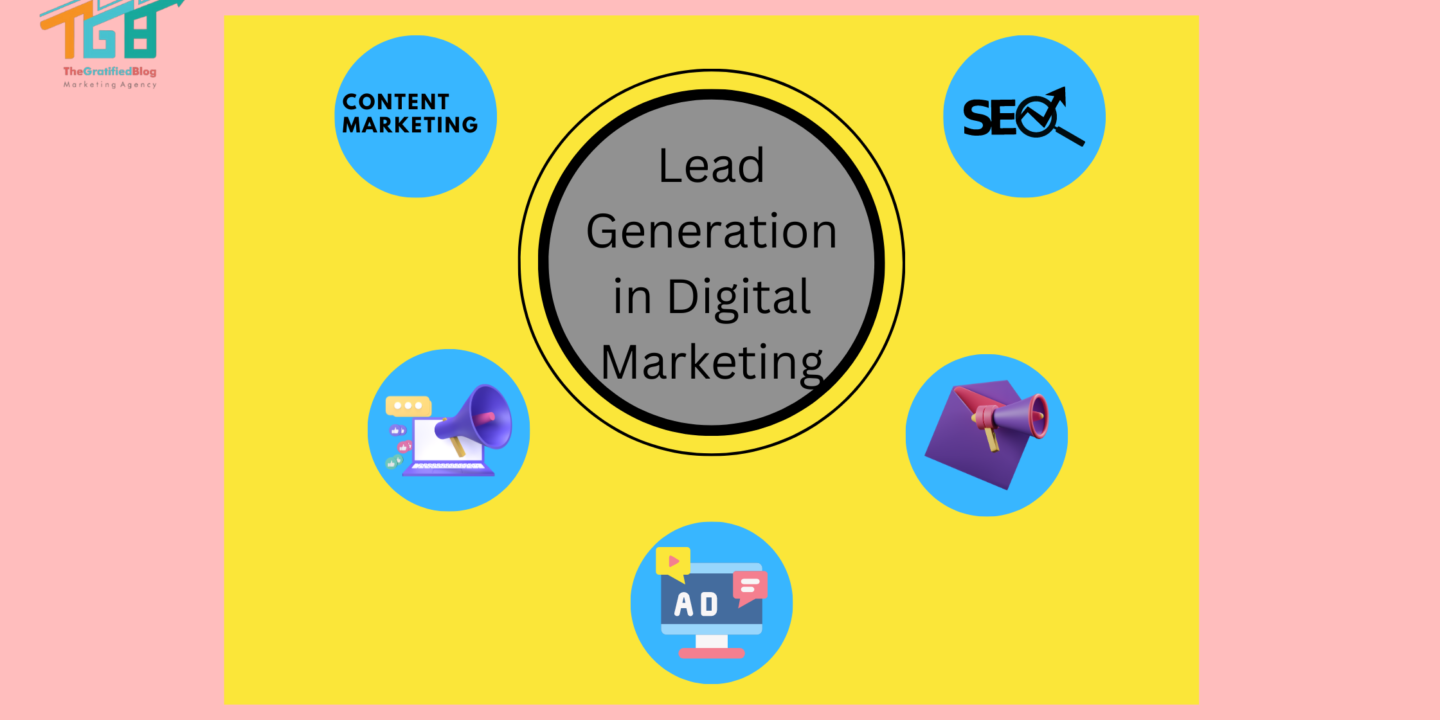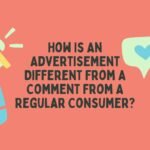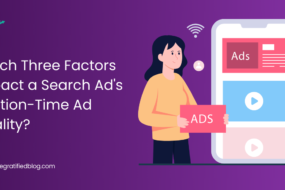
Almost every business out there is looking for ways to generate leads. Leads are the lifeblood of any company – without them, your business will slowly die. But what is lead generation in digital marketing, exactly? And how can you use it effectively in your digital marketing efforts?
So that you can start generating quality leads for your business as soon as possible. So, In this article, we will discuss what lead generation is, why it is essential, and how you can start using it to generate more leads for your business. We will also explore some of the top strategies and tools for lead generation.
What Are Leads? What Is Lead Generation In Digital Marketing?
Leads are potential customers or clients interested in your product or service. They may visit your website, engage with your social media accounts, or attend your events.
You can proactively market to and engage with these individuals to turn them into paying customers.
Once leads are captured, businesses can engage with them through targeted marketing efforts to nurture and convert them into customers. It involves building relationships, providing relevant information, addressing their needs or pain points, and guiding them through the sales funnel.
Lead generation attracts and converts potential customers into actual customers through targeted marketing efforts. It can involve any number of strategies, including paid advertising, email marketing, social media marketing, and more.
In digital marketing, these leads typically take any strategy, such as Paid advertising, email marketing, social media marketing, etc.
The goal is to engage and capture the target audience’s attention, entice them to provide their contact information (such as name, email address, phone number, or company details), and initiate a relationship with them.
Why Lead Generation Is Effective With Digital Marketing?
There are many ways to generate leads by generating high-quality lead ads. We will be discussing them in a while. But first, let’s understand why lead generation is so effective in digital marketing.
Key reasons why lead generation is effective with digital marketing include:
- The target audience is specifically interested in your product or service. It will help you reach your ideal customers more effectively and efficiently.
- Compared to traditional marketing methods like print advertising and TV commercials, digital marketing is much more cost effective and targeted.
- Because you are reaching out to highly targeted, interested prospects, you are more likely to convert them into paying customers.
- Lead generation also helps you create more engaging and personalised customer experiences, leading to higher satisfaction and more loyal customers.
- Finally, leads generated through digital marketing channels can be tracked and analysed over time. This data can help you make better marketing decisions in the future.
Now that you know why lead generation is essential to digital marketing, let’s explore some of the top strategies and tools you can use to generate quality leads today.
Top Five Lead Generation Strategies With Digital Marketing
Source: YouTube
There are many different strategies that you can use to generate leads in digital marketing. Here are just a few of the most effective ones.
Lead Generation From Paid Advertising
It’s the easiest way to sell your business product or service; businesses with a high advertising budget can go for paid advertising on search engines and YouTube.
Paid advertising, such as Google Adwords, allows you to reach highly targeted prospects with paid ads. You can show your ads to people actively looking for your product or service and target them based on location, demographics, interests, and more.
When we talk about paid ads, let me tell you that paid ads will get charged for using pay-per-click advertising.
Lead Generation Through Email Marketing
It’s another effective way to generate leads in digital marketing. Do you know most marketers opt for email marketing to generate leads because of one reason: it is a crucial way to promote your business?
Email marketing allows you to develop a list of subscribers who have expressed interest in your product or service. You can then use this list to send personalised emails, targeted messages, and relevant and valuable offers to your audience.
This will help you build trust and credibility with your prospects, making them more likely to convert into customers in the future.
You can use automated emails and other communication tools, like a lead nurturing funnel, to engage with leads until they are ready.
More Reads – Best Techniques Of Email Marketing For Lead Generation In 2023
Lead Generation Through Social Media Marketing
Social media is ideal for building relationships with your target audience and growing your customer base. Whether paid ads or organic content, social media effectively reaches and connects with your ideal customers.
For example, platforms like Facebook, Instagram, and Twitter allow you to engage directly with your audience through posts and ads that aren’t too sales-focused or pushy.
You can also use tools like influencer marketing or social listening to identify the proper accounts and target them with your offer. This will help you get more exposure for your brand, making it easier to convert new customers.
Social media can also be a great place to collect feedback and market research data from your customers, which you can use to improve your product or service.
Lead Generation Through Search Engine Optimization (SEO)
One of the most powerful ways for lead generation in digital marketing is through search engine optimization (SEO). With the power of SEO techniques, your website can rank higher in search results and attract more targeted, qualified traffic to your site.
It will take time and effort, but it is one of the most effective ways to generate quality leads for your business. You need to optimise your website with relevant keywords that describe exactly what you do and why customers should choose you.
You can also use SEO-friendly content, like blog posts or ebooks, to attract new prospects over time. This will help you build a reputation as an expert in your industry and show potential customers what sets you apart from the competition.
Lead Generation With Content Marketing
Finally, You can build your audience and drive traffic to your website or landing pages through a strategic content strategy.
One of the best ways to do this is by creating blog posts or other relevant and valuable content for your target market. You can also use the content to position yourself as an expert in your industry and acquire backlinks from authoritative sites.
Whether through social media posts, infographics, webinars, ebooks, videos, or other forms of content, there are many ways to reach and engage with your ideal customers online.
Landing Pages and Lead Magnets
Landing pages and lead magnets play crucial roles in lead generation strategies. Here’s how they contribute:
Landing Pages
- A landing page is a standalone web page designed for marketing or advertising campaigns. Its primary goal is to convert visitors into leads or customers by encouraging them to take a specific action, such as signing up for a newsletter, downloading a resource, or requesting a demo.
- Landing pages are optimized for conversions, with clear and compelling calls-to-action (CTAs), minimal distractions, and relevant content that aligns with the campaign’s message or offer.
- They provide a focused and streamlined user experience, guiding visitors through conversion and reducing friction by removing navigation links and extraneous content.
- Landing pages are often used with digital advertising campaigns, email marketing, social media promotions, and other lead-generation initiatives to drive targeted traffic and capture leads effectively.
Lead Magnets
- A lead magnet is an incentive or valuable offer to visitors in exchange for their contact information, such as email addresses, names, and phone numbers.
- Lead magnets are designed to attract and entice prospects, offering value that addresses their needs, interests, or pain points. Common examples of lead magnets include eBooks, whitepapers, guides, webinars, templates, checklists, free trials, and discount codes.
- The key to an effective lead magnet is relevance and perceived value. It should offer a solution to a problem or provide actionable insights that resonate with the target audience.
- Lead magnets serve as entry points into the sales funnel, allowing businesses to initiate contact with prospects, nurture relationships, and move them closer to conversion.
- Once prospects opt-in to receive the lead magnet, they become leads in the database, enabling businesses to follow up with further communication and nurture campaigns and sales pitches.
Analytics and Tracking
Analytics and tracking play a crucial role in lead generation by providing insights into the effectiveness of marketing campaigns, user behavior, and lead generation strategies. Here’s how analytics and tracking contribute to lead generation:
- Performance Measurement: Analytics tools track key performance indicators (KPIs) such as website traffic, conversion rates, click-through rates (CTR), bounce rates, and lead generation metrics. By analyzing these metrics, marketers can evaluate the performance of their lead-generation efforts and identify improvement areas.
- Campaign Attribution: Analytics helps attribute leads and conversions to specific marketing campaigns, channels, and touchpoints. Marketers can determine which campaigns drive the most leads and conversions, allowing them to allocate resources effectively and optimize marketing spend.
- User Behavior Analysis: Analytics tools provide insights into user behavior on the website, including pages visited, time spent on site, navigation paths, and interactions with content and CTAs. Understanding user behaviour helps marketers identify friction points, optimize the user experience, and enhance lead generation funnels.
- Lead Source Tracking: Analytics allows marketers to track the sources of leads and conversions, whether from organic search, paid advertising, social media, email marketing, referrals, or other channels. Marketers can prioritize resources and invest in high-performing channels by understanding the most effective lead sources.
- Conversion Funnel Analysis: Analytics tools enable marketers to analyze the conversion funnel and identify bottlenecks or drop-off points in the lead generation process. By optimizing the conversion funnel, marketers can streamline the user journey, reduce friction, and improve lead generation outcomes.
- A/B Testing and Optimization: Analytics facilitates A/B testing of landing pages, CTAs, messaging, and other elements of marketing campaigns. Marketers can identify the most effective strategies and optimize lead generation efforts for maximum impact by testing different variations and analysing performance metrics.
- Lead Segmentation and Targeting: Analytics data can segment leads based on demographics, behaviour, interests, and preferences. By segmenting leads, marketers can deliver personalized and targeted messaging, offers, and content that resonate with specific audience segments, driving higher engagement and conversions.
- ROI Measurement: Analytics helps measure the return on investment (ROI) of lead generation campaigns by tracking revenue generated, cost per lead (CPL), customer acquisition cost (CAC), and other financial metrics. By calculating ROI, marketers can assess the profitability of their lead generation initiatives and make data-driven decisions about resource allocation and strategy.
Now, let’s discuss the tools for lead generation.
Top Lead Generation Tools In Digital Marketing
Well, there are several tools in the market, but the top tools stand out:
It is a powerful all-in-one marketing software that helps you build your audience, generate leads, and nurture those leads into customers.
It’s one of the most comprehensive and popular tools for lead generation. Its features include landing pages, CTAs, lead capture forms, and more. It also provides analytics and tracking to help you optimize your lead-generation efforts.
Features of Hubspot include:
- Lead management tools, including customized lead nurturing and scoring
- Detailed analytics to track your leads and conversions over time
- A robust and intuitive content management system (CMS)
- A built-in CRM to manage all your customer and marketing data.
So if you’re looking for a powerful and effective tool to drive your lead-generation efforts, we recommend HubSpot as the top choice. With its various features, you can’t go wrong with this tool.
OptinMonster is a versatile lead generation tool that enables you to create and display engaging opt-in forms, pop-ups, slide-ins, and other lead capture forms on your website. It integrates with popular email marketing services and provides advanced targeting and personalisation options.
Features of OptinMonster include:
- OptinMonster provides a user-friendly drag-and-drop form builder that allows you to create custom opt-in forms without any coding knowledge.
- OptinMonster offers various form types, including pop-ups, slide-ins, floating bars, and inline forms.
- OptinMonster provides advanced targeting options to display your forms to specific segments of your audience.
- OptinMonster’s Exit-Intent® technology detects user behaviour and displays a targeted form when a visitor is about to leave your website.
- With OptinMonster’s A/B testing feature, you can create multiple variations of your forms and test them against each other to determine the most effective design, messaging, or call-to-action.
- OptinMonster provides comprehensive analytics and insights to track the performance of your forms.
- OptinMonster seamlessly integrates with popular email marketing services, allowing you to sync captured leads to your email lists automatically.
- Mobile-Friendly and Responsive
- You can schedule your campaigns in OptinMonster at specific times or dates.
LinkedIn Sales Navigator is a powerful tool for B2B lead generation. It allows you to search for and connect with potential prospects, send personalised messages, and track their engagement. It offers a range of features to help sales professionals and businesses find and connect with potential leads.
Features of LinkedIn Sales Navigator include:
- Sales Navigator offers advanced search filters, allowing you to narrow your search for leads based on criteria such as location, industry, job title, company size, and more.
- The tool provides personalised lead recommendations based on your saved leads, connections, and profile interactions, helping you discover new potential prospects.
- You can save leads and accounts that are relevant to your business.
- Sales Navigator provides InMail access, enabling you to send direct messages to LinkedIn members not in your connections.
- TeamLink leverages the collective network of your sales team.
- Sales Navigator provides real-time notifications and alerts about activities and updates from your saved leads and accounts.
- Sales Navigator integrates with popular Customer Relationship Management (CRM) systems.
- Sales Navigator includes access to LinkedIn Learning, an online education platform offering various courses and resources to enhance your sales and prospecting skills.
Intercom
Intercom is a customer messaging platform facilitating lead generation through live chat, chatbots, and personalised messaging. It helps engage visitors, capture leads, and qualify them for further sales processes. While its primary focus is on engaging and communicating with customers, it offers features that can also help generate leads.
The Intercom features include:
- Intercom offers a live chat feature that allows real-time conversations with website visitors, enabling instant engagement and support.
- Intercom’s targeted messaging feature allows you to send personalised messages to specific audience segments.
- Intercom enables the creation of lead capture forms that can be embedded on your website or included in chat messages to collect visitor contact information and generate leads.
- Intercom provides chatbot functionality that allows for automated conversations with visitors.
- Intercom integrates with popular email marketing platforms.
- Intercom includes a built-in CRM system
- Intercom offers lead scoring capabilities to assess the quality and potential of leads based on various engagement metrics.
- Intercom allows communication across multiple channels, including website chat, email, and mobile messaging.
Conclusion
Now that you know what lead generation is and the strategies and tools you can use to grow your customer base, it’s time to implement this knowledge.
If you have any questions about lead generation in digital marketing, feel free to leave them in the comment section. We will be happy to answer you.
Thansk for reading 🙂
Also, Read – KPIs for Digital Marketing: A Comprehensive Guide








No Comments